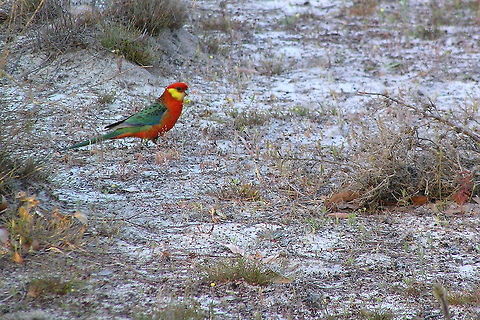
Habitat
Western rosellas socialise in pairs but will often congregate in largish groups of twenty or so to forage when the season permits; their diet is herbivorous, consisting mostly of grass and seeds. They nest mostly in hollow tree trunks usually a meter or so deep and will favour hollows that have dust in the bottom . The female incubates the eggs and leaves in the morning and afternoon to eat food found by the male.Reproduction
Western rosellas socialise in pairs but will often congregate in largish groups of twenty or so to forage when the season permits; their diet is herbivorous, consisting mostly of grass and seeds. They nest mostly in hollow tree trunks usually a meter or so deep and will favour hollows that have dust in the bottom . The female incubates the eggs and leaves in the morning and afternoon to eat food found by the male.Food
Western rosellas socialise in pairs but will often congregate in largish groups of twenty or so to forage when the season permits; their diet is herbivorous, consisting mostly of grass and seeds. They nest mostly in hollow tree trunks usually a meter or so deep and will favour hollows that have dust in the bottom . The female incubates the eggs and leaves in the morning and afternoon to eat food found by the male.References:
Some text fragments are auto parsed from Wikipedia.